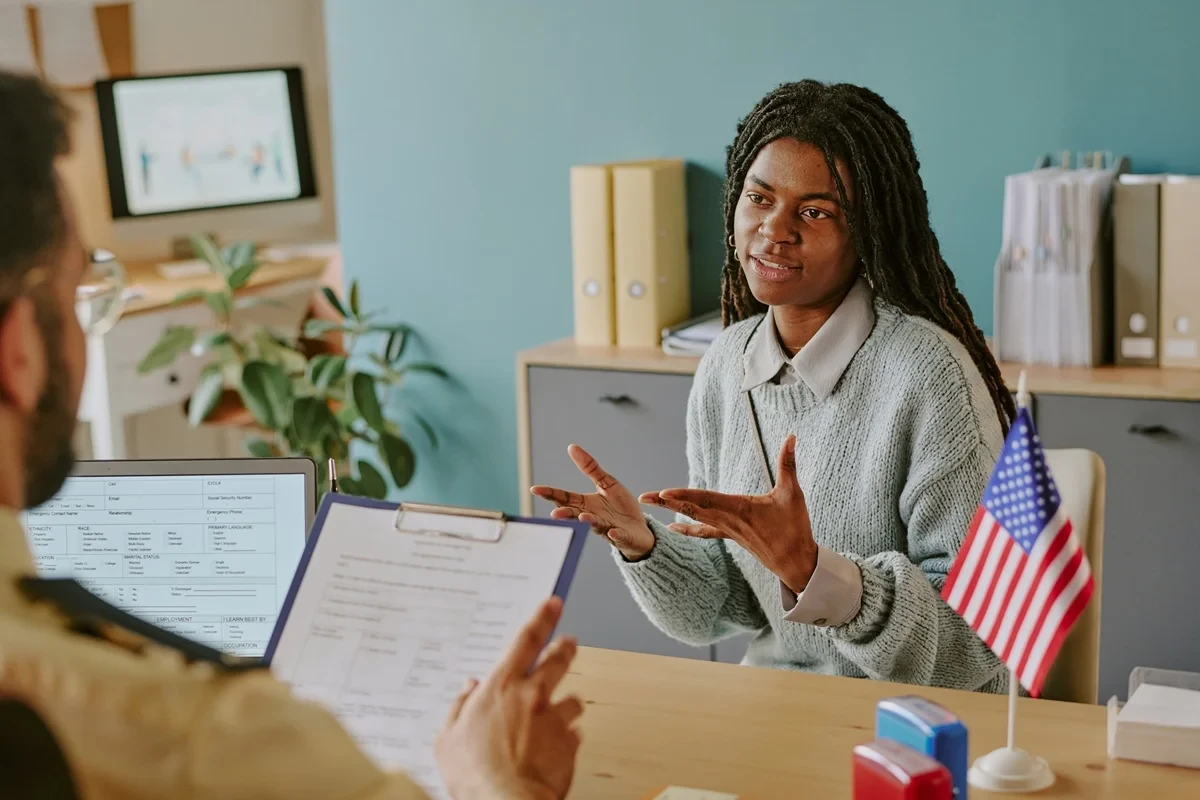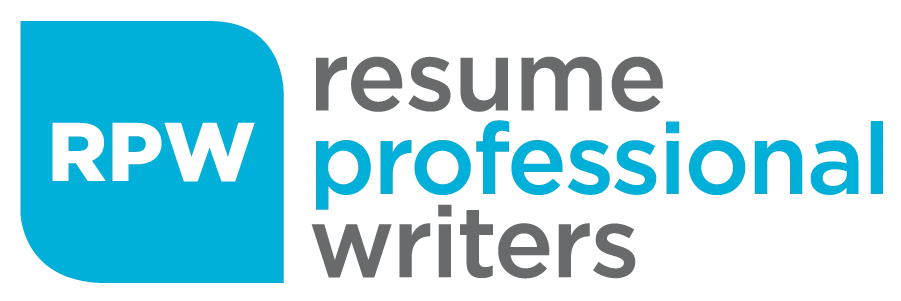In the competitive field of education, teacher interviews are about more than just qualifications—they’re about demonstrating your philosophy, classroom approach, and ability to cultivate positive relationships with students, parents, and colleagues to enhance classroom management and cooperation.
Sharing personal stories during the interview process can help illustrate your passion and motivation for teaching, making your responses more relatable and memorable to interviewers.
Whether you’re a first-time applicant or a seasoned educator looking for a new role, this comprehensive guide will walk you through 30 of the most common teacher interview questions, categorized by theme. You’ll also find expanded, thoughtful sample answers, interview preparation tips, and insights into what administrators are really looking for, as well as how understanding the interview process can help you prepare more effectively.

Why Teacher Interviews Matter
Teacher interviews are an opportunity for schools to assess:
- Your teaching style and philosophy
- How you handle real classroom situations
- Your adaptability and commitment to student growth
- Your communication and interpersonal skills
- How teacher candidates align with the school’s values and expectations
The more prepared and self-aware you are, the more confidently you’ll respond—and the more likely you’ll stand out as a top candidate, especially by demonstrating professionalism and collaboration within the teaching profession.
General Teacher Interview Questions
Before diving into classroom scenarios and behavioral questions, interviewers typically begin with general questions to get a sense of who you are, your teaching journey, and what motivates you as an educator. Preparing for each interview question is crucial to make a strong first impression. These questions set the tone for the interview and give you a chance to make a strong first impression.
1. Tell us about yourself.
This is often the first question and sets the tone for the interview.
Sample Answer:
“I’m a passionate and dedicated middle school teacher with seven years of experience in public school settings. My teaching experience includes not only full-time classroom roles but also a robust student teaching placement, where I gained hands-on practice handling real classroom challenges and differentiating instruction for various learners. I hold a master’s degree in education with a concentration in curriculum development. Over the years, I’ve taught English and Social Studies to diverse groups of learners, including ESL students and those with IEPs.
2. Why did you become a teacher?
Sample Answer:
“Teaching was a calling for me. As a child, I was fortunate to have teachers who made a profound impact on my confidence and love for learning. I wanted to be that influence for others. I truly believe in the power of education to change lives. Teaching offers me the unique opportunity to shape not only academic skills but also character, resilience, and a sense of purpose in young people. I am passionate about making a difference in children’s education, and I have seen how both parental and teacher involvement can lead to positive outcomes for students and the school community.”
3. Why do you want to work at our school?
Sample Answer:
“What drew me to your school is its commitment to inclusive education and its strong emphasis on community involvement. I have researched the school district and appreciate how its policies and community values support a positive learning environment, which aligns with my approach to education. I admire the way your staff collaborates across disciplines to support the whole child, not just academically but socially and emotionally. I also appreciate your use of technology and project-based learning, which align well with my own teaching style. My teaching methods and experiences are closely aligned with the school’s mission and philosophy, as I believe in fostering both academic excellence and personal growth. I’m excited about the opportunity to grow professionally and contribute meaningfully to your already vibrant school culture, as I see myself fitting in well with the school’s culture of collaboration and support.”
4. What are your biggest strengths as a teacher?
Sample Answer:
“One of my greatest strengths is building strong relationships with students. I believe trust is the foundation for learning, so I make an intentional effort to get to know each student—what motivates them, what challenges them, and how they learn best. I also focus on cultivating positive relationships with both students and colleagues, which contributes to effective classroom management and a harmonious educational environment. These positive relationships help students thrive by fostering engagement, trust, and positive behavior in the classroom. I also recognize that a teacher’s personality affects classroom management and student engagement, so I strive to be flexible, compassionate, and fair in my approach.
5. What is one weakness you’re working to improve?
Sample Answer:
“Early in my career, I sometimes struggled with overplanning lessons—trying to do too much in a short amount of time. It came from a place of enthusiasm, but I’ve learned that pacing is crucial. I now use chunking strategies and regularly check for understanding to keep my lessons balanced. I also reflect after each lesson to see what worked and where I can improve. When discussing challenges, I make it a point to be honest about obstacles I’ve faced and the steps I’ve taken to overcome them. For example, my biggest teaching challenge was learning to adapt my instruction for students with diverse learning needs, which pushed me to develop more flexible lesson plans and seek out new resources. Continuous self-reflection has become an essential part of my teaching practice.”
Classroom Management Questions
A well-managed classroom fosters an environment where learning thrives. Creating a supportive learning environment is essential, as it helps all students reach their full potential. This question explores how you maintain discipline, encourage student engagement, and create a safe and respectful atmosphere for all students, including strategies for handling disruptive students as part of maintaining a positive learning environment.
6. How do you manage classroom behavior?
Sample Answer:
“I believe in proactive classroom management. From the first day of school, I set clear, consistent expectations and co-create classroom norms with students to foster a sense of ownership. I use a combination of positive reinforcement, logical consequences, and restorative conversations. I also strive to build strong relationships with students because when they feel respected and heard, they’re more likely to engage positively. Understanding a student’s behavior and identifying its root causes is key to developing effective interventions and supporting a positive learning environment. I am open to classroom observations and value feedback as opportunities to reflect on and improve my management strategies. Regular routines, a structured environment, and ongoing communication play a big role in maintaining a respectful classroom culture.”
7. What would you do if a student is consistently disruptive?
Sample Answer:
“First, I would observe the behavior to identify possible triggers and patterns. I’d address the student privately to understand any underlying issues and work together to develop a behavior plan. I also believe in involving parents or guardians early and collaborating with counselors if necessary. My goal is to help the student re-engage while minimizing the impact on others. By addressing disruptive behavior, I help create a positive classroom environment where all students learn effectively. I believe in firm boundaries, but I never lose sight of empathy and the importance of second chances.”
8. How do you handle conflicts between students?
Sample Answer:
“I address student conflicts quickly and constructively to prevent escalation. I bring the students together in a calm, neutral space and facilitate a conversation where each can share their perspective. I guide them toward empathy, compromise, and mutual understanding. I also facilitate challenging conversations to promote empathy and understanding among students, especially when discussing issues related to diversity, equity, and inclusion. If needed, I involve a counselor or administrator for mediation. I also use the incident as a learning opportunity, integrating social-emotional skills into future lessons or activities.”
9. How do you build rapport with students?
Sample Answer:
“I make it a point to greet students at the door and use their names often. I learn about their interests, cultures, and backgrounds and incorporate them into my lessons. I also share appropriate parts of my own life to humanize myself and build trust. When students know you care about them as people, they feel more comfortable taking academic risks.”
10. How do you communicate with parents?
Sample Answer:
“I establish communication early in the school year through welcome emails or phone calls. I use tools like ClassDojo and Remind for regular updates and also send home newsletters with academic and behavior progress. I always strive for a positive tone, even when discussing concerns, and I view parents as essential partners in their child’s learning. I’m also available for conferences and encourage open dialogue throughout the year.”
Curriculum, Instruction & Assessment
These questions dig into how you plan lessons, differentiate instruction, and make content engaging. Effective teaching strategies and thoughtful lesson planning are essential for meeting diverse student needs. Schools want to see how you meet standards while adapting to student needs and interests, and how you use various methods to assess students’ progress and inform instruction.
11. How do you plan a lesson?
Sample Answer:
“I use backward design to ensure alignment between objectives, assessments, and instruction. I begin by identifying the learning outcomes, then determine how I’ll measure success—through exit tickets, projects, or discussions. When creating my lesson plan, I outline the structure of a typical lesson, which includes an engaging introduction, clear objectives, guided practice, independent work, and a closing reflection. My lesson planning process ensures that activities accommodate different learning styles and include opportunities for collaboration, critical thinking, and reflection. I also incorporate formative assessments to make real-time instructional adjustments.”
12. How do you differentiate instruction?
Sample Answer:
“Differentiation is central to my teaching. I use pre-assessments to identify where students are and then adjust content, process, and product to meet diverse needs. For example, I might provide tiered reading materials, offer audio supports, allow student choice in projects, or modify assignments for students with IEPs. I also build flexible grouping into my classroom so students can learn from and support each other. Additionally, I incorporate group projects as a teaching strategy to differentiate instruction and promote collaboration among students.”
13. How do you integrate technology into your teaching?
Sample Answer:
“Technology is a powerful tool for engagement and accessibility. I incorporate technology in the classroom by using Google Classroom to organize assignments, Edpuzzle for interactive videos, and tools like Nearpod or Jamboard for collaborative work. Purposefully integrating technology in the classroom helps support diverse student needs and promotes student engagement. For assessments, I use platforms like Quizizz and Formative. I also encourage digital literacy by teaching students how to evaluate online sources and responsibly use tech tools.”
14. How do you assess student learning?
Sample Answer:
“I use a variety of assessments, including formative assessments like quick writes, thumbs-up checks, or group discussions to monitor ongoing understanding. For summative assessments, I incorporate tests, projects, presentations, and portfolios. I also emphasize student self-assessment and reflection. This holistic approach gives me a clearer picture of each student’s growth and informs my instruction. By using these assessment practices, I am able to support and track students’ academic growth throughout the year.”
15. What would you do if most of your class failed a test?
Sample Answer:
“I would first reflect on my instruction and the assessment itself to identify potential gaps in understanding. I’d reteach the concepts using a different method—perhaps more visual, hands-on, or peer-based. I’d then provide opportunities for students to practice and retake the assessment. I believe assessment should be a learning tool, not just a grading mechanism.”
Collaboration & Situational Questions
Collaboration is at the heart of school success. These questions assess how you work with colleagues, communicate with families, and contribute to a school’s professional culture. In your responses, highlight how your collaborative approach aligns with the school’s focus and priorities, showing your commitment to supporting the school’s educational goals.
16. Describe a successful lesson you taught.
Sample Answer:
“I once designed a cross-curricular unit on environmental conservation that combined science, writing, and art. Students conducted research on local environmental issues, wrote persuasive essays, and created infographics to raise awareness. The engagement was incredible—students felt empowered and their presentations even inspired a community clean-up project. It was a powerful reminder of how relevant, student-centered instruction fosters deeper learning.”
17. Tell us about a time you helped a struggling student succeed.
Sample Answer:
“A student in my class was reading below grade level and had lost confidence. I implemented a daily 1:1 reading routine with leveled books, integrated phonics games, and partnered him with a reading buddy. I kept close contact with his family and celebrated every milestone. By the end of the year, he had caught up significantly and even volunteered to read aloud in class. His transformation reaffirmed why I teach.”
18. How do you handle stress and burnout?
Sample Answer:
“I prioritize self-care and maintain a healthy work-life balance by setting realistic expectations and boundaries. I also rely on organization tools like planners and checklists to manage my workload efficiently. Most importantly, I build strong professional networks so I can share ideas, ask for help, and support others.”
19. Describe your approach to working with colleagues.
Sample Answer:
“I view collaboration as essential. I’ve co-taught with special education teachers, planned interdisciplinary units with team members, and participated in PLCs to analyze student data. I believe that when educators share ideas and support one another, students benefit the most.”
20. What would you do if a lesson wasn’t going well?
Sample Answer:
“If I sense that a lesson isn’t resonating with students, I pivot. That might mean simplifying the concept, providing a different example, introducing hands-on materials, or engaging students in a quick check-in activity. Flexibility is part of effective teaching. After the lesson, I reflect and revise it for the next time.”
Situational & Behavioral Questions
Behavioral and situational questions test your real-world judgment and how you react under pressure. Use the STAR method (Situation, Task, Action, Result) to structure your responses effectively.
21. How do you support English Language Learners (ELLs)?
Sample Answer:
“I support ELLs through visual aids, vocabulary pre-teaching, sentence frames, and simplified language. I also use cooperative learning structures so students can practice language in authentic contexts. I regularly assess understanding with visuals, gestures, and quick checks rather than relying solely on written assessments. Partnering with the ELL specialist and maintaining strong communication with families are also part of my approach.”
22. How do you support students with IEPs or special needs?
Sample Answer:
“I work closely with the special education team to understand each student’s IEP goals and accommodations. I modify assignments, provide assistive technology if needed, and break tasks into manageable steps. I also use visuals and multi-sensory instruction. I regularly check in with students and adjust my approach as needed to ensure equitable access to learning.”
23. How do you approach culturally responsive teaching?
Sample Answer:
“I create an inclusive classroom by incorporating diverse perspectives into the curriculum and ensuring that students see themselves in what we read, write, and discuss. I use culturally relevant examples and celebrate cultural traditions in respectful ways. I also engage in ongoing self-reflection and seek feedback from students and families to improve inclusivity.”
24. What do you do if a parent challenges your grading or teaching style?
Sample Answer:
“I listen respectfully and try to understand their perspective. I present evidence of student performance, such as rubrics, work samples, and assessment data, and explain my rationale. I stay professional and open to feedback, and work toward a shared goal of supporting the student’s learning. I also involve administration if needed for transparency and collaboration.”
25. What does your ideal classroom look like?
Sample Answer:
“My ideal classroom is inclusive, collaborative, and student-centered. The physical space includes flexible seating, student work displays, and designated learning stations. The emotional environment is built on respect and curiosity. Students feel safe to express ideas, ask questions, and take risks. Learning is active, differentiated, and meaningful.”
26. How do you stay current with educational trends and research?
Sample Answer:
“I stay updated by subscribing to professional journals, participating in webinars, attending conferences, and engaging in online communities like Edutopia and Twitter teacher chats. I also pursue ongoing professional development and reflect on how I can apply what I learn in my classroom.”
27. How do you incorporate social-emotional learning (SEL)?
Sample Answer:
“I integrate SEL by teaching skills like empathy, goal setting, self-awareness, and responsible decision-making through daily routines, class meetings, and literature discussions. I also model SEL behaviors, use mindfulness techniques, and create opportunities for students to reflect and collaborate respectfully.”
28. What would you do if a student disclosed abuse or a serious concern?
Sample Answer:
“I would follow the school’s mandated reporting protocol immediately and report the concern to the appropriate authority. I would remain calm, reassure the student they did the right thing by sharing, and avoid making promises I can’t keep. Ensuring the student’s safety while complying with legal and ethical responsibilities is my top priority.”
29. How do you motivate students who seem disengaged?
Sample Answer:
“I try to uncover the root cause—whether it’s a lack of interest, confidence, or external issues. I then build lessons around student interests, provide choices, and set achievable goals to build momentum. I also work on building relationships, offering consistent encouragement, and helping students see how the content connects to their lives.”
30. What makes you a good fit for this position?
Sample Answer:
“I bring a student-centered mindset, strong instructional skills, and a collaborative spirit. My background and experience make me a strong fit for this teaching position, as I understand what hiring managers look for and how to meet the expectations of the role. I align with your school’s mission to support the whole child and prepare students for a changing world. In addition to my passion for teaching and commitment to growth, I am eager to contribute by mentoring and supporting new teachers as part of your school community. I’m confident I can make a meaningful impact on your school community.”
Final Tips for Acing Your Teacher Interview
Preparing for a teaching interview can be both exciting and nerve-wracking. To help you put your best foot forward, here are six essential tips to keep in mind as you get ready for your big day:
- Research the school thoroughly: Familiarize yourself with the school’s philosophy, focus areas, and the school district’s priorities. Understanding the school district can help you answer teacher interview questions more effectively and show you are well-prepared.
- Practice answering teacher interview questions aloud: Rehearse with a friend, mentor, or in front of a mirror to build confidence and refine your responses.
- Prepare specific examples: Bring a teaching portfolio that includes lesson plans, assessments, and examples of how you support student success.
- Demonstrate your teaching philosophy and strategies: Be ready to discuss your teaching methods and how they align with the school’s culture and goals.
- Show a positive attitude and continuous learning mindset: Highlight your commitment to professional development opportunities and adapting your teaching to meet students’ needs.
- Ask insightful questions: Engage school leaders by inquiring about mentorship programs, the school’s focus on student-centered learning, and upcoming initiatives to gain valuable insights.
As you prepare for the interview process, focus on how you answer teacher interview questions by providing specific examples of your problem-solving skills and experiences with challenges. This will help you stand out to potential employers.
Ready to Land Your Dream Teaching Job? Let Us Help You Stand Out
Preparing thoroughly for your teaching interview—by reflecting on your experiences, practicing your responses, and understanding what schools are truly looking for—can significantly increase your chances of success. But just as important as what you say in the interview is how you present yourself on paper.
That’s where we can support you.
We understand how competitive the education field is, and how essential a professionally written resume for teachers is to making a strong first impression. With years of experience helping educators at every stage of their careers, our expert writers know how to showcase your qualifications, teaching style, and passion for education by emphasizing teacher skills for resume effectiveness that align with what hiring managers want.
Whether you’re a recent graduate or a seasoned teacher seeking new opportunities, we tailor your documents to reflect your unique strengths and achievements. We don’t just write resumes—we help you tell your story, so your application rises above the rest.
Let expert resume writers be your partner in achieving your career goals. With our help, you’ll walk into your next interview confident that both your resume and your responses reflect the best version of you. Start your journey toward your dream teaching job today.








